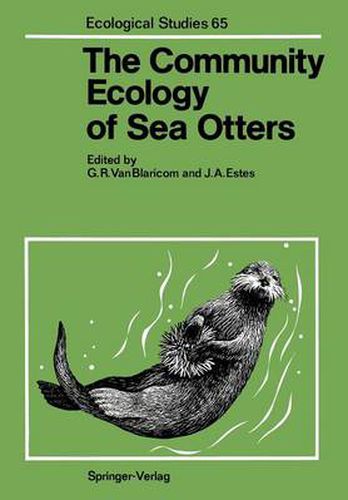Readings Newsletter
Become a Readings Member to make your shopping experience even easier.
Sign in or sign up for free!
You’re not far away from qualifying for FREE standard shipping within Australia
You’ve qualified for FREE standard shipping within Australia
The cart is loading…






This title is printed to order. This book may have been self-published. If so, we cannot guarantee the quality of the content. In the main most books will have gone through the editing process however some may not. We therefore suggest that you be aware of this before ordering this book. If in doubt check either the author or publisher’s details as we are unable to accept any returns unless they are faulty. Please contact us if you have any questions.
The impetus for this volume comes from two sources. The first is scientific: by virtue of a preference for certain large benthic invertebrates as food, sea otters have interesting and significant effects on the structure and dynamics of nearshore communities in the North Pacific. The second is political: be cause of the precarious status of the sea otter population in coastal California, the U.S. Fish and Wildlife Service (USFWS) announced, in June 1984, a proposal to establish a new population of sea otters at San Nicolas Island, off southern California. The proposal is based on the premise that risks of catastrophic losses of sea otters, due to large oil spills, are greatly reduced by distributing the population among two geographically separate locations. The federal laws of the U.S. require that USFWS publish an Environmental Impact Statement (ElS) regarding the proposed translocation of sea otters to San Nicolas Island. The EIS is intended to be an assessment of likely bio logical, social, and economic effects of the proposal. In final form, the EIS has an important role in the decision of federal management authority (in this case, the Secretary of the Interior of the U.S.) to accept or reject the proposal.
$9.00 standard shipping within Australia
FREE standard shipping within Australia for orders over $100.00
Express & International shipping calculated at checkout
This title is printed to order. This book may have been self-published. If so, we cannot guarantee the quality of the content. In the main most books will have gone through the editing process however some may not. We therefore suggest that you be aware of this before ordering this book. If in doubt check either the author or publisher’s details as we are unable to accept any returns unless they are faulty. Please contact us if you have any questions.
The impetus for this volume comes from two sources. The first is scientific: by virtue of a preference for certain large benthic invertebrates as food, sea otters have interesting and significant effects on the structure and dynamics of nearshore communities in the North Pacific. The second is political: be cause of the precarious status of the sea otter population in coastal California, the U.S. Fish and Wildlife Service (USFWS) announced, in June 1984, a proposal to establish a new population of sea otters at San Nicolas Island, off southern California. The proposal is based on the premise that risks of catastrophic losses of sea otters, due to large oil spills, are greatly reduced by distributing the population among two geographically separate locations. The federal laws of the U.S. require that USFWS publish an Environmental Impact Statement (ElS) regarding the proposed translocation of sea otters to San Nicolas Island. The EIS is intended to be an assessment of likely bio logical, social, and economic effects of the proposal. In final form, the EIS has an important role in the decision of federal management authority (in this case, the Secretary of the Interior of the U.S.) to accept or reject the proposal.